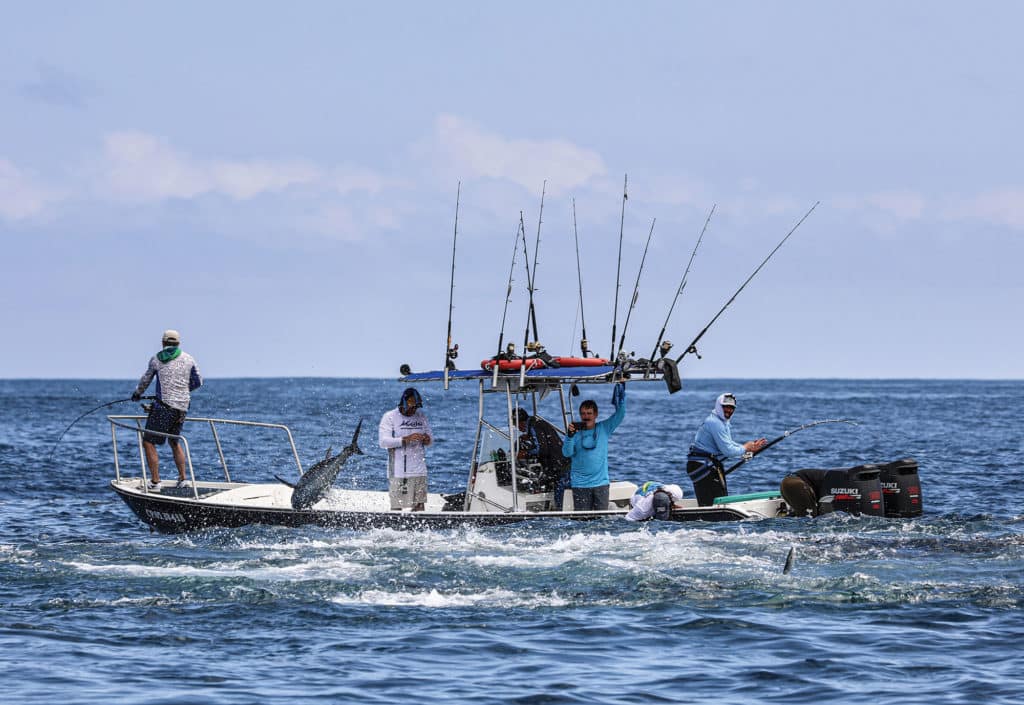
Central and South America’s often-fabulous Pacific coast fishing is no secret. Proof of that lies in the proliferation of marinas, charters and fishing resorts from southern Mexico through Panama. While few areas are yet truly crowded with anglers, in many stretches, you can expect company on the water. Not so off Colombia. In three days of fishing during a springtime visit to that country’s Pacific coast, out of Bahia Solano, I saw precious few other boats, and those were being used for local transportation or artisanal fishing. In that respect, the country might be similar to fishing Panama a few decades ago. The coastal topography is certainly reminiscent of Panama, but anglers who like long stretches of water all to themselves will appreciate Colombia.
And there’s more for sport fishermen to appreciate here. About a decade ago, Colombia declared a large chunk of its waters (including Bahia Solano) from the pristine coastline to 20 miles offshore as a “zona exclusiva de pesca artesanal”—a zone designated exclusively for artisanal fishing, encompassing more than 240 square miles of ocean and, I was told, the country does enforce it.

That might explain why in three days I saw no sign of any large seiners or longliners—and perhaps why, on the mornings we ran offshore, we had no trouble finding schools of yellowfin tuna.
Safe Tuna
After a leisurely breakfast at the Hotel Playa del Oro, I joined Paul Michele, now with a Band of Anglers, and Milo Marulanda and Alejandro Linares, with Sport Fishing Colombia (sport-fishingcolombia.com), carrying our tackle to the beach where a panga waited to carry us the 50 yards out to the 32-foot Angler center-console (made in Colombia) with twin Suzuki 115s, on which we would explore the fishing off this coast.
Our skipper, Tirso Villaba, said on that first morning, we’d head offshore in search of breezing yellowfin, fast-moving schools chasing bait on top. Both Linares and Marulanda had told us emphatically that, thanks to restrictions on industrial fishing, angling success off Colombia’s Pacific coast keeps improving.
Marulanda says he’s seen large fishing vessels bearing flags from other countries being detained by Colombian military boats for trying to fish in closed areas.
“I think the tuna know they’re safe here,” Linares says.
And sure enough, with a short run offshore on the smooth ocean under leaden skies, we found tuna among the dolphins and began throwing big poppers. Among quite a few smashing strikes, we connected and held onto three in the 30- to 60-pound range. (That also gave us a chance to try out the new Okuma Makaira and Azores spinning reels we’d brought down, which performed flawlessly.) The fish were scattered and moving fast. We could have kept running-and‑gunning for them all morning—and we were tempted—but we decided to make the 30-mile run north to Punta Piña.
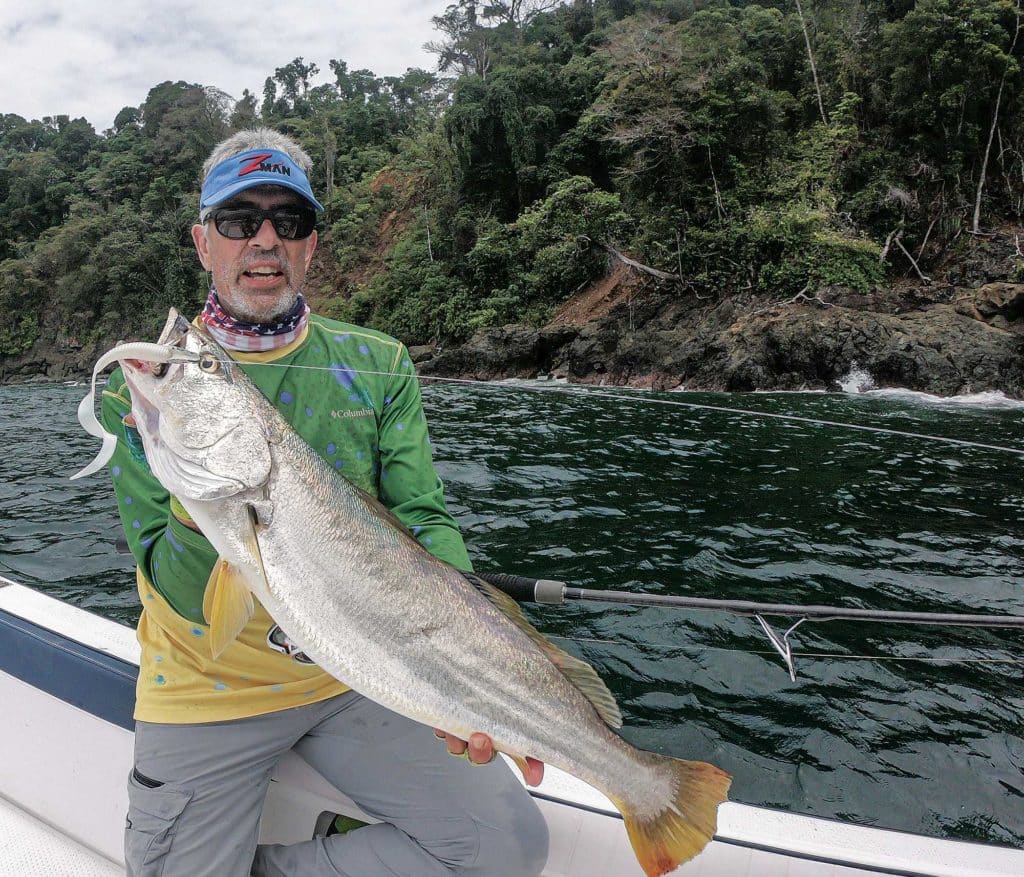
Here, we found a line of tall rocks jutting for miles well out into the Pacific. It couldn’t have looked fishier, though the water being cooler than usual—which Linares had warned us about—seemed to have shut off any major bite. That came as a surprise to Michele, who had fished this coast previously. Last time he was here, he says, a huge school of 15- to 30-pound mullet snapper at the surface made for fast topwater fishing. These he generally got to the boat; not so much the big Atlantic tarpon that he also hooked here, which jumped off.
In fact, tarpon are regularly hooked on Sport Fishing Colombia boats along the coast north of Bahia Solano, though few are landed. Linares says the numbers of the resident population of tarpon seem to keep growing. Marulanda agrees, noting that their anglers have caught quite a few tarpon, at least one of which looked to be upwards of 200 pounds.
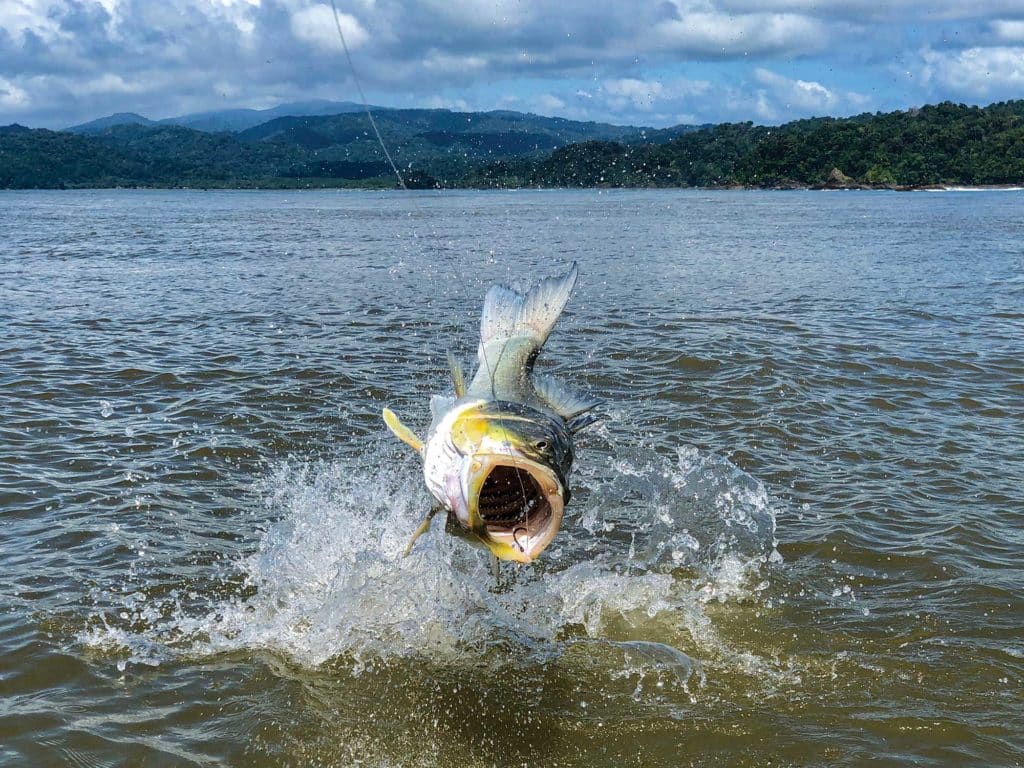
But we kept working the rocks, and late on that first afternoon, we caught three cubera, two on Michele’s big popper. One of those big snapper would have weighed 50 to 60 pounds or so. As Michele was bringing that to the boat, Linares was lifting in a large bluefin trevally that struck his metal jig.
Sails on the Surface
Our second morning proved similar to the first, as again we found yellowfin offshore pretty quickly. After moving closer to shore, we spent more time jigging, though powerful currents made that difficult. At one point we found numbers of Eastern Pacific bonito—tasty, toothy, smaller cousins of dogtooth tuna—hanging well above bottom in about 300 feet.
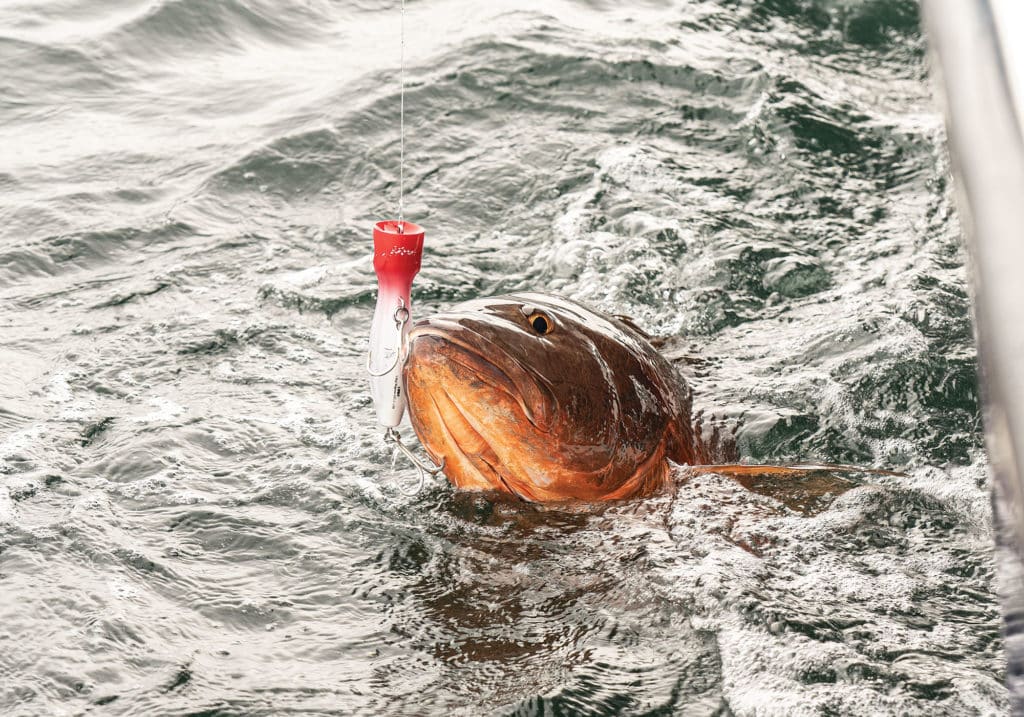
But the third (and our last) day was an eye-opener. Initially we enjoyed some nearshore action, including a roosterfish lost near the boat, some smaller cubera, African pompano, big Pacific jacks and Sierra mackerel. I caught a nice orangemouth corvina in the 12-pound range casting a Z-Man GrubZ near shoreline rocks.
But it was the trip back to the lodge late in the afternoon that I most remember despite not catching much. The Pacific had lost its chop, and its mirrorlike surface reflected the blue sky’s high, thin clouds. We did manage to boat some good mahi, which we spotted while running then pitched baits to. As the sun neared the horizon, we saw a dorsal fin, waving high above the surface. Sailfish! Then we saw another, and a third.

We eased up to pitch a live goggle-eye, but the fish proved pretty spooky, and we had no takers. As we motored on, with dusk approaching, we began seeing more sails and bills and free-jumpers in considerable numbers. We managed to put liveys right in front of a couple as they sat nearly motionless, but they couldn’t have been more disinterested. Soon, the encroaching darkness forced us in.
There was no telling why the fish had lockjaw just then, but in any case, I had to be impressed with seeing so many sails in a small area. I regretted that we didn’t have another day to try trolling the waters for sails.
In fact, our local experts had described some remarkable sailfish numbers, acknowledging that they’re still working out the sailfish fishery here.
“In April and May [coinciding with the peak of the sardine run in these waters], there’s a huge migration of sailfish, when you can find thousands of sails in the waters off Bahia Solano,” says Steve Peak, who owns Sport Fishing Colombia. So far, few recreational fishermen have much awareness of this fishery, he points out.
Linares says the sails are offshore year-round, but when the sardines move in, so do sails, and that’s when they move quite close to shore in great numbers.
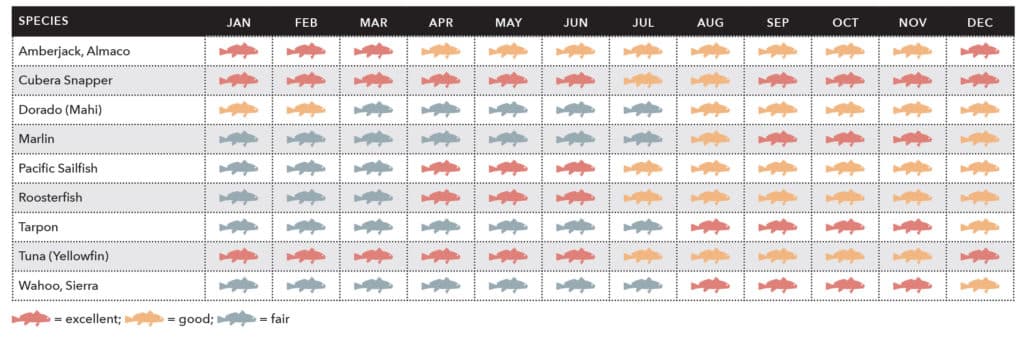
Also, Marulanda adds, the average size of sailfish here has been impressive, with many in the 90-pound range.
“Colombia is the last frontier along the Central/South American coast for sport fishermen. The gamefish species are the same as those in Guatemala, Costa Rica and Panama,” Linares says, “but Colombia lacks big numbers of fishing boats,” and that translates into fish that just aren’t used to seeing lures, he says.
Planning a Trip
Not so many years ago, internal and political unrest made Colombia a place most American tourists avoided. But in the past decade or so, that has changed, and the country has again become an appealing destination.
We flew into Medellin. I had long associated that name with drug cartels, but in fact it surprised me as a large, vibrant, clean and new city. It’s set amid mountains (its 4,500-foot elevation keeps Medellin temperatures mild) and, at least in the part of the city we walked around, we found considerable green spaces. Also, prices remain a relative bargain, so far. For instance, a nice breakfast at the airport was $5, and a great ribeye steak dinner with wine, about $25.

To reach Bahia Solano, we made the one-hour flight out the morning after our overnight in Medellin on Satena airline (satena.com) and checked in at the hotel Playa de Oro (playadeorolodge.com).
While the hotel might be considered rustic, it offered the necessary amenities, and I found it quite comfortable. The meals were outstanding and offered varied preparation each evening for the fish we brought in. (Memo to would-be visitors: Don’t release a good-size corvina!) Nor will the cost set you back unreasonably; at press time, I found the rate for a double room at about $75.
Read Next: Fishing the Lonely Pacific Coast of Colombia
Our Angler center-console boat proved adequate for our needs and was large enough to permit four anglers to fish simultaneously. Sport Fishing Colombia (sportfishingcolombia.com) can help arrange package trips of four to six full fishing days, including in-country flights, ground transportation, meals and accommodations. We brought our own gear, but Sport Fishing Colombia has plenty of high-quality rods and reels to offer. The outfit suggests that anglers bring their favorite lures and jigs, but it also has a selection available. As far as what else to bring, of course plenty of sunscreen and bug repellent should be in your bag. (Though biting bugs didn’t bother us much, fortunately.) When I travel to remote areas, I take an ACR ResQLink personal locator beacon as well, which offers a bit of peace of mind. (It’s one of those things I’m glad to have and hope to never use.)
Atlantic Tarpon: Going Pacific
Early in this century, anglers fishing along the coast of Panama or Costa Rica reportedly hooked what they swore were Atlantic tarpon. These days, hooking big tarpon on the Central American Pacific Coast has become fairly commonplace. But their numbers seem to be increasing, and Colombia is a good case in point. While most of these fish are jumped off by the anglers, unsuspecting and unprepared for a fish that’s difficult at best to hook, the thrills are there. And Sport Fishing Colombia experts say it’s not just the odd fish but, more recently, anglers are encountering large schools of them and on a fairly regular basis.
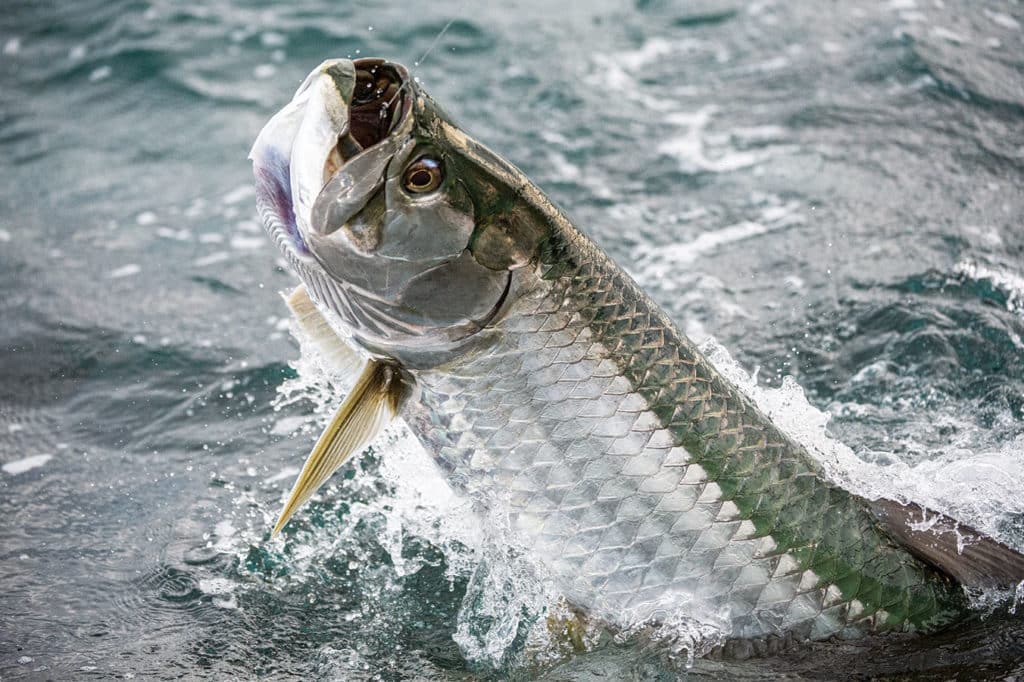
Such ostensibly growing numbers suggest the fish could be spawning and growing in the Pacific, and Ross Robertson, Ph.D., a leading expert on Pacific fishes of Central America, says, “There are some very small tarpon in the eastern Pacific that must have been spawned here.” On the other hand, he stresses that Atlantic tarpon have been swimming into the Pacific via the Panama Canal for decades. Also, the recent enlargement of the canal might facilitate such relocation of tarpon. Much remains to be learned, but it is certain that tarpon are here to stay and offer yet another great gamefish target for sport fishermen in the eastern Pacific.








